

William Stopford
4 Days Ago
Kia Australia is onto a winner with the Sorento, which is arguably best sampled in GT-Line 2.2D AWD guise as tested here.
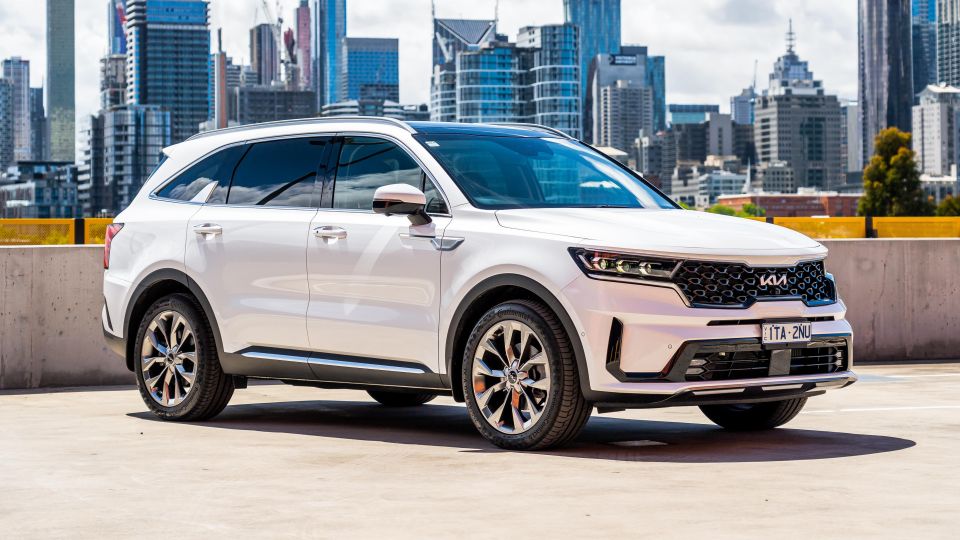


Quickly see how this car stacks up against its competition. Select any benchmark to see more details.
Take advantage of Australia's BIGGEST new car website to find a great deal on a Kia Sorento.
Two years into its life, the Kia Sorento has established itself as one of the best ways to carry around a growing family on a reasonable budget.
It’s also established itself as a convincing alternative to more expensive European seven-seaters, as Kia joins Mazda and Hyundai in pushing upmarket. The GT-Line diesel isn’t the most expensive member of the range anymore, given the hybrid has touched down, but it’s not what you’d call cheap anymore.
Of course, previous experience has told us the GT-Line is more than good enough to justify that sticker price, especially in diesel guise.

Why bother getting back behind the wheel? It’s been two years since we last sampled the Sorento in GT-Line Diesel AWD trim, and the game has changed in that time.
The Sorento has become more expensive since its launch, and its rivals have been refined over time. Diesel options are less popular than before as the market moves to hybrid and electric vehicles, and the price of the fuel rises relative to petrol.
With all of that in mind, is the Kia Sorento still at its strongest in diesel GT-Line guise?
Prices are rising across the industry, and Kia hasn’t been able to buck the trend. The Sorento GT-Line 2.2D AWD is now $1000 more expensive based on list price, and around $4000 more based on drive-away price.
It’s still good value alongside its seven-seat rivals, however. It undercuts the equivalent Hyundai Santa Fe, the Highlander, by $1500 based on list price, and the range-topping Nissan Pathfinder Ti-L is $12,000 more expensive.
Mazda’s range-topping CX-9 seven-seater is the Azami, priced from $71,550 before on-roads in seven-seat guise.
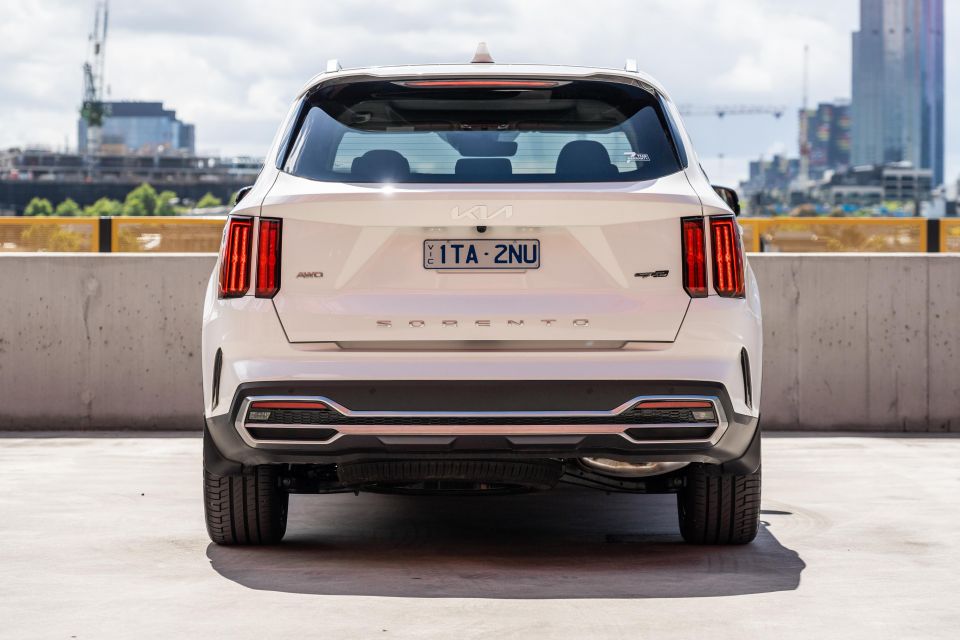
2023 Kia Sorento pricing:
All prices exclude on-road costs
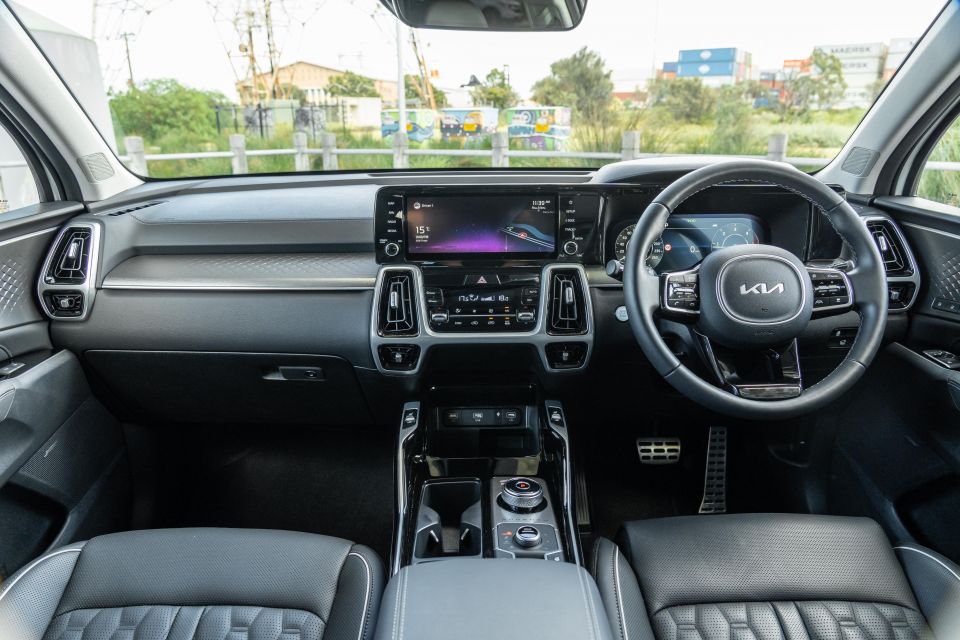
The phrase ballin’ on a budget comes to mind here.
The Sorento has the same smart, modern interior design as the wider range, but it’s topped off with some luxurious extra touches to justify its GT-Line billing and steeper sticker price. From the quilted Nappa leather seats to the glass panoramic sunroof, it’s fully loaded.
Front passengers sit in heated and ventilated armchairs that offer plenty of support on longer drives. The driving position is good, with enough adjustment to accomodate lanky drivers – or to allow small drivers a good look at the road ahead.
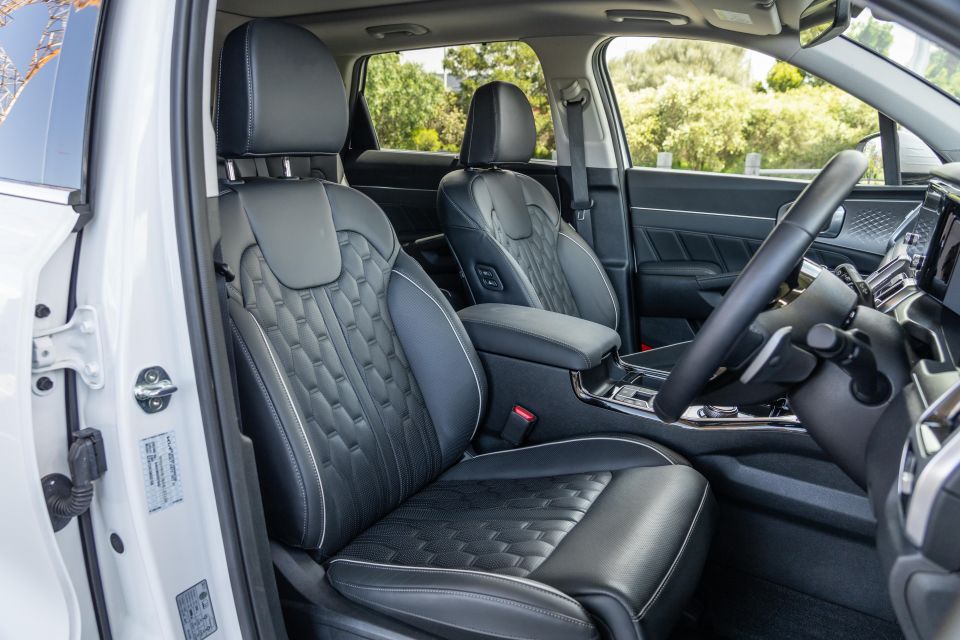
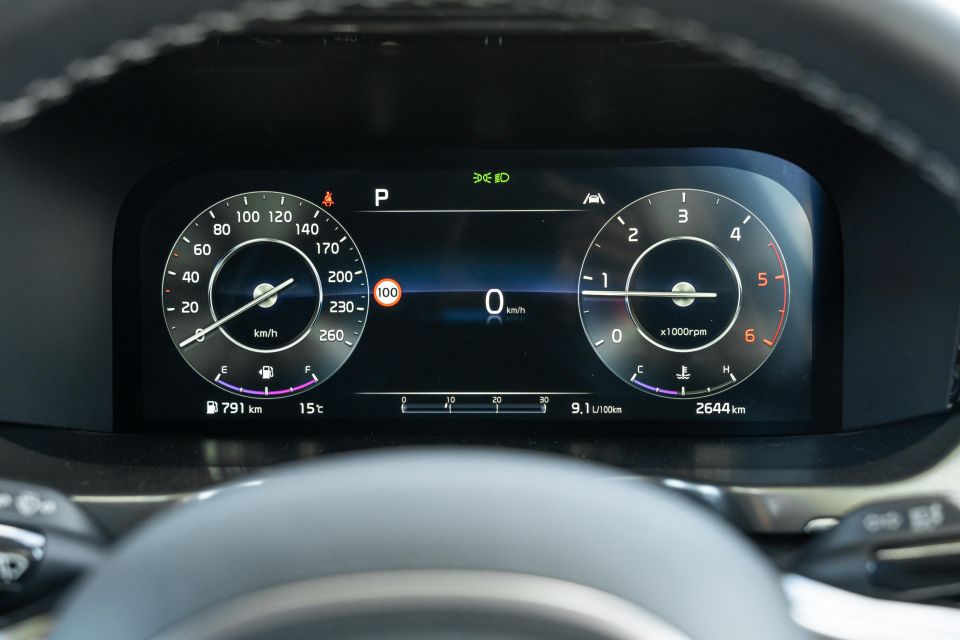
With generously padded armrests and a quality steering wheel it’s a plush place to spend time, and the view over the world outside is commanding.
It’s heavy on gloss black (and therefore fingerprints), but the dashboard has a handsome design.
The climate controls fall easily to hand, and the touchscreen infotainment system takes at least some inspiration from Mercedes-Benz with its horizontal housing.
We’ve had plenty of experience with the widescreen infotainment system featuring in the latest Kia and Hyundai models. It’s intuitive to use and responds quickly to inputs, although the shortcut buttons in the top corner of the screen are hard to reach.
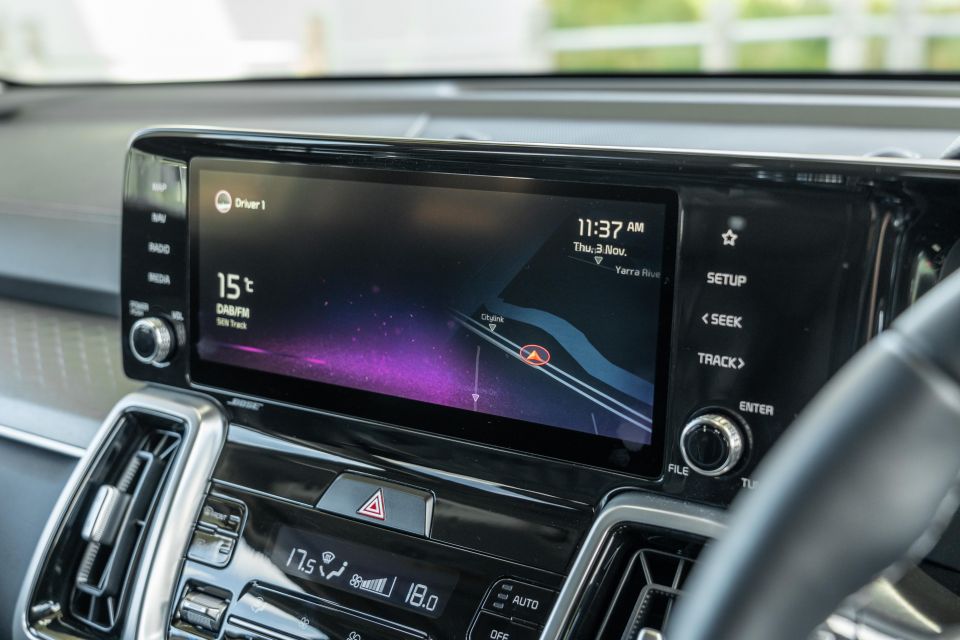
With digital radio, factory navigation, smartphone mirroring, and neat touches like a Sounds of Nature program that mimics footsteps in crisp snow or the crackle of an open fire, it’s not short on features.
Every single one of our reviews of this system has complained about the fact there’s no wireless smartphone mirroring, and the longer Kia makes us wait the more annoying (and further behind the curve) it is.
Unique to the GT-Line is a 12.3-inch digital instrument cluster, which offers a range of themes based on your drive mode… but no mapping, nor the customisation you get in Volkswagen Group products. It’s nice, but doesn’t do much to move the game forward.
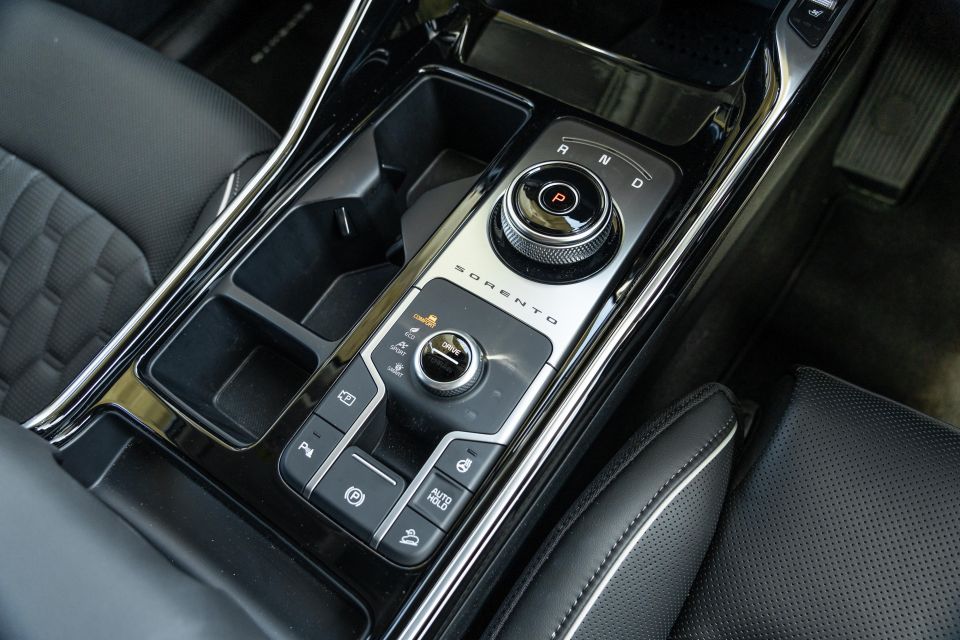
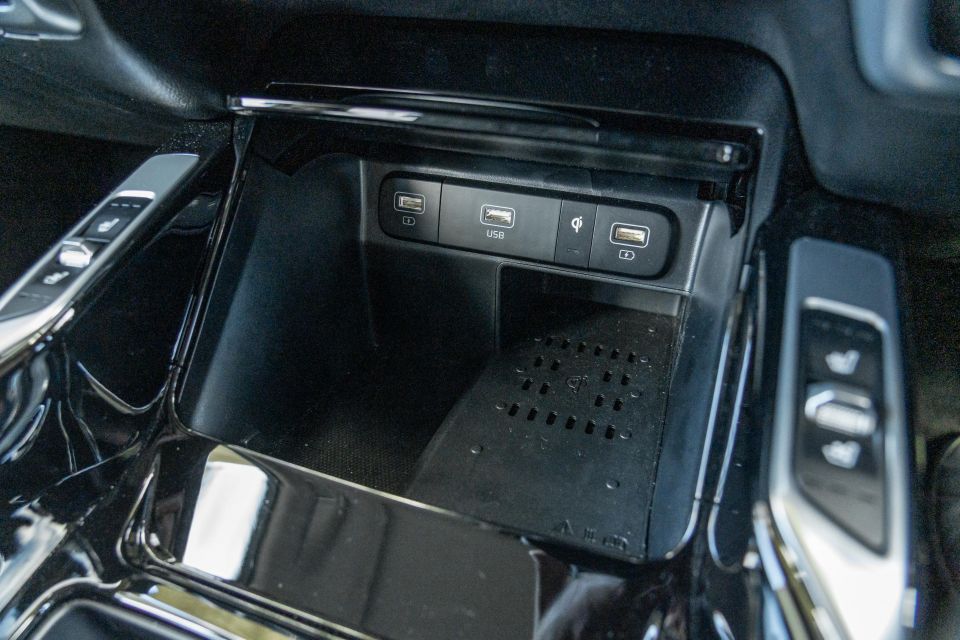
Along with the wireless phone charger, you’re not short on places to plug in; there are three ports up front, four in the second row, and two in the third row. It’s time for Kia to move to USB-C ports instead of USB-A, though.
There’s an abundance of storage space up front, with a huge space for phones under the dashboard, two cupholders on the transmission tunnel, a deep bin under the central armrest, and spacious door pockets.
Second-row legroom and headroom are both impressive for even leggy teenagers and full-sized adults, to the point where six-footers can happily sit behind six-footers. It’s impressive.
You’re not short on amenities, either. A fold-down central armrest is on hand to keep warring children separate, and there’s plenty of cupholders back there for road trips. Although there are air vents, you don’t get temperature controls for second-row occupants.
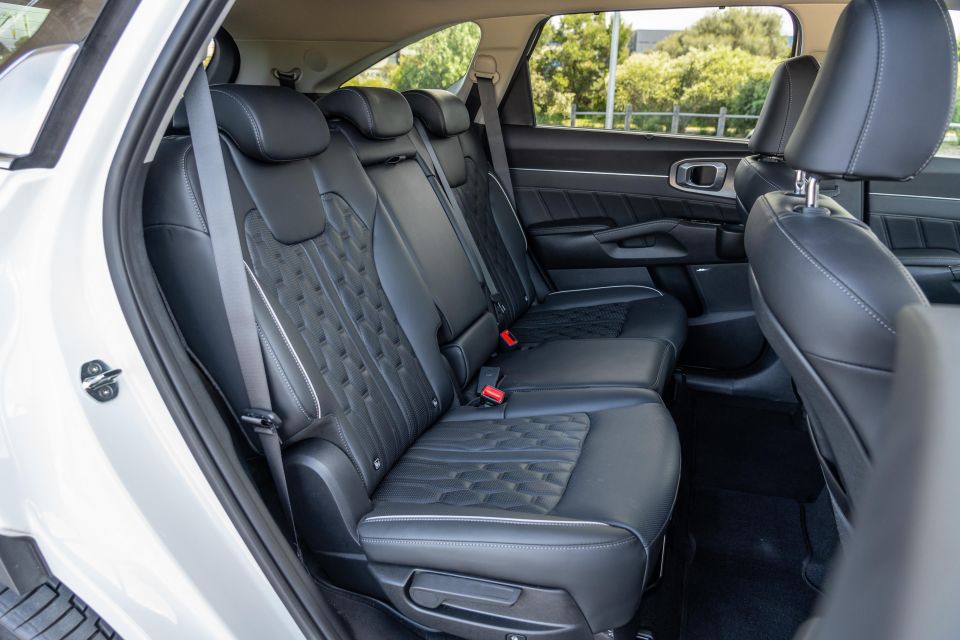
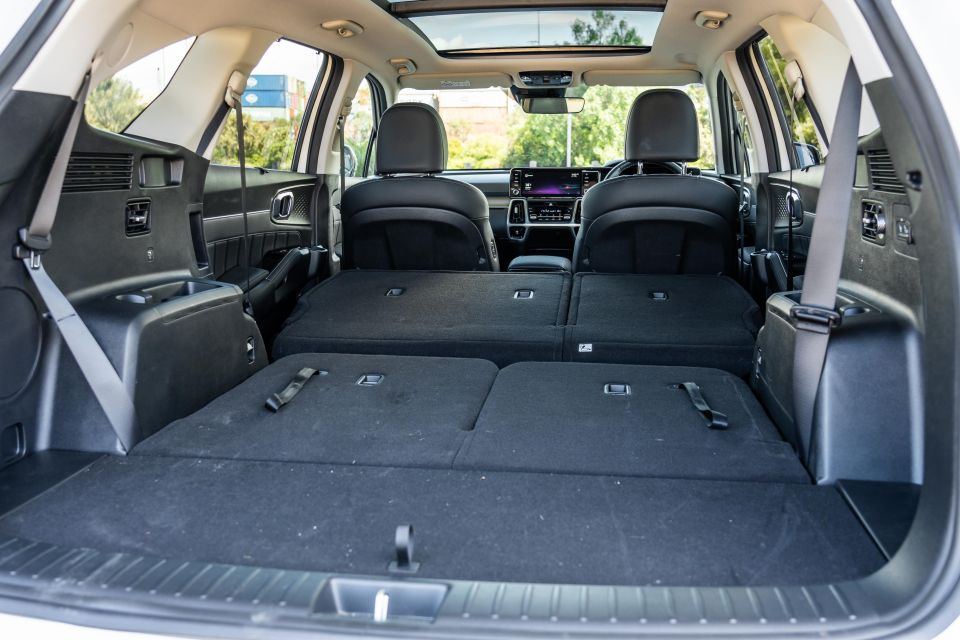
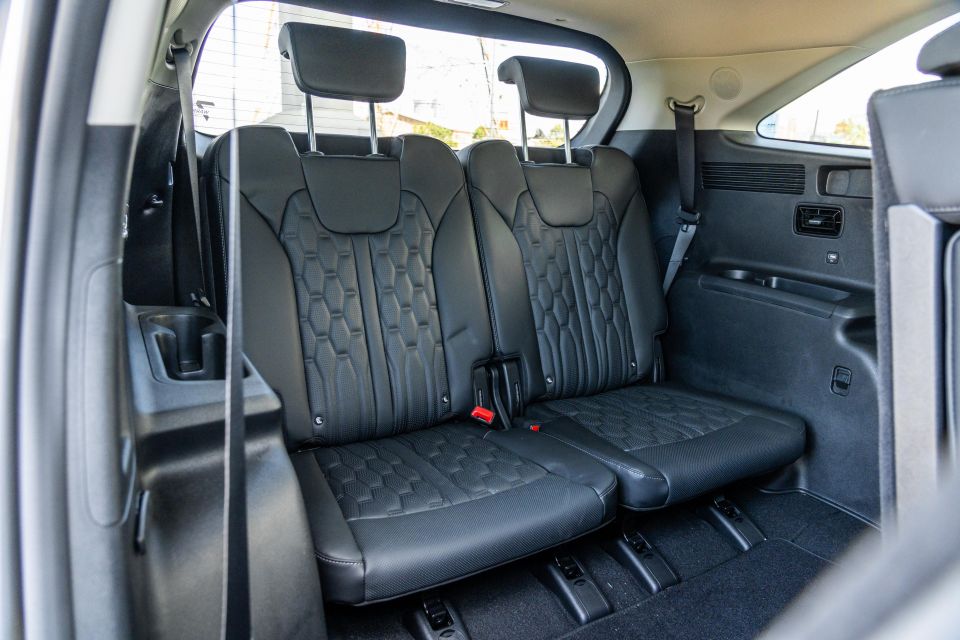
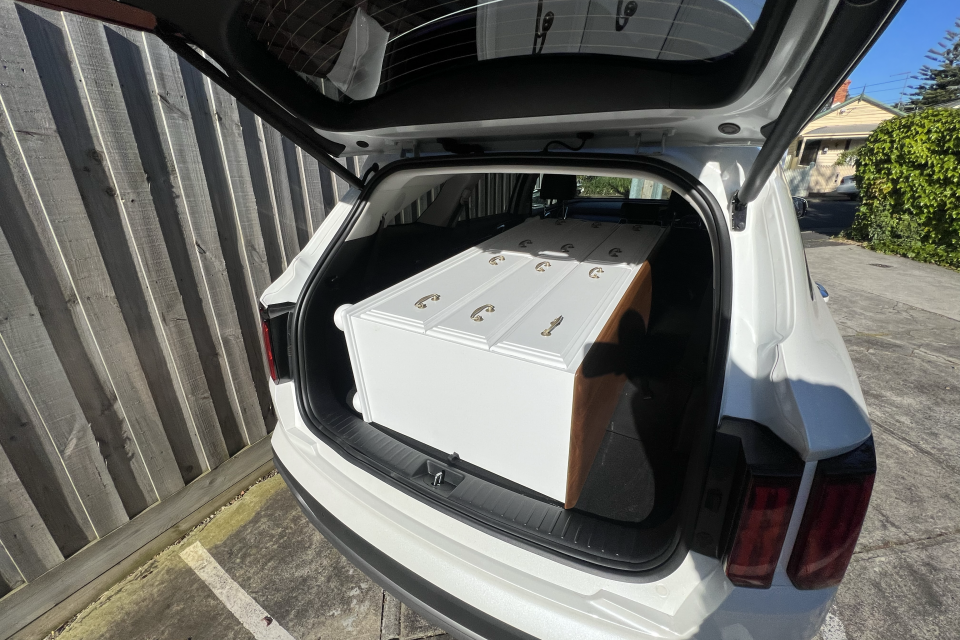
The third row is okay without being outstanding. As is usually the case in seven-seat SUVs, the rearmost seats are best reserved for small kids. One-touch folding for the second row makes access easier, but it’s a tight squeeze getting back there if you aren’t young and flexible.
Headroom is tight for adults, and the flat seats mean your knees will be up around your chin if you have long legs. Separate fan controls for the third row are a plus, as are the USB charge points and storage for a small bottle and phone.
In terms of luggage space, the Sorento offers 187L with the third row in place, 616L in its five-seat layout and 2011L with the second and third rows folded flat. We fit a six-drawer dresser in the back with space to spare, as the image above shows.
All versions feature a full-size alloy spare, and there’s even space to spare to stow the rear cargo blind beneath the boot floor.
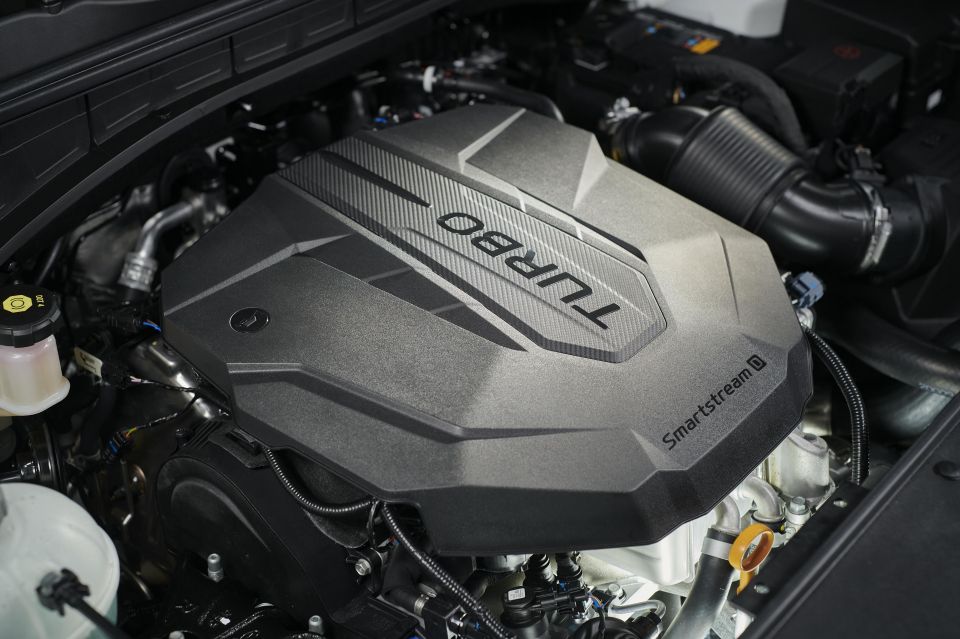
The more expensive engine in the Sorento is a 2.2-litre four-cylinder turbo-diesel, mated with all-wheel drive and an eight-speed dual-clutch automatic transmission.
It makes 148kW of power at 3800rpm and 440Nm of torque between 1750 and 2750rpm, and a claimed fuel economy figure of just 6.1L/100km on the combined cycle. The fuel tank holds 67 litres.
You’ll be able to match that figure on the highway, although over a week with the Sorento our average rounded out closer to 8.0 litres per 100km with plenty of city driving.
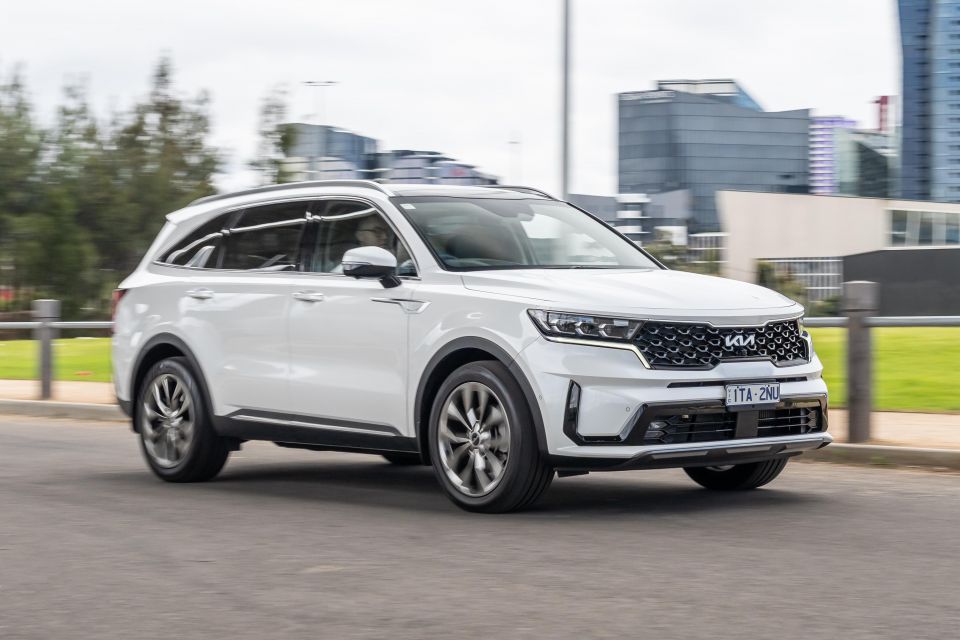
The Kia Sorento drives with plenty of polish, although a few of the foibles that have been with it since launch remain.
The turbo-diesel engine and eight-speed dual-clutch transmission are, for the most part, excellent. It feels as though the engine over-revs as soon as you lean on the throttle from standstill, instantly jumping to 2000rpm for a smoother, quicker getaway without the hesitation common in older dual-clutch transmissions.
The fact it’s a wet-clutch setup means the transmission won’t burn itself out, and having revs to play with means the Sorento doesn’t bog down and lurch around on light throttle inputs. It can occasionally get caught between first and second gear, though.
With peak torque on tap at just 1750rpm, the Sorento never has trouble getting up and moving unless all seven seats are full, and everyone on board is carrying a suitcase full of lead. In-gear response is excellent – aided by the fact the transmission is intelligent enough to change down quickly when more performance is required.
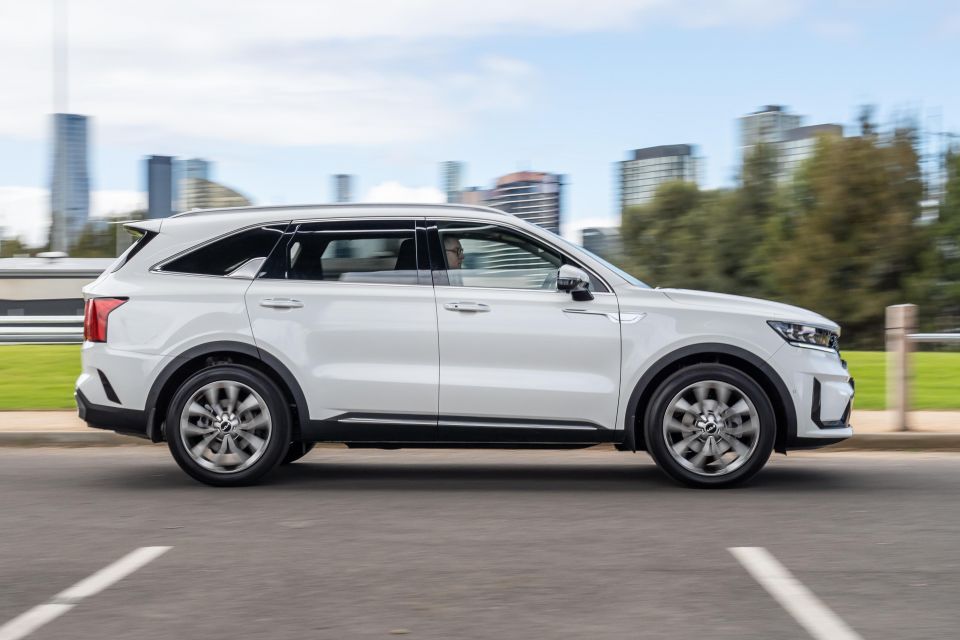
It’s also smooth and quiet once you’re on the move. There’s almost no wind noise from the mirrors on the highway, and the engine hums away in the background at cruising speed.
The engine a bit rattly at a standstill though, even once it’s warm. There’s vibration through the steering wheel and door trims, which isn’t really in keeping with the Sorento’s premium pitch.
Kia hasn’t fitted idle stop/start to Australian models, which feels like an oversight. For one, having the engine turned off at the lights would kill the vibrations – and fewer fumes caused in school carparks by idling parents waiting for their kids can only ever be a good thing.
There’s now a Sorento Hybrid (HEV) for more environmentally-minded parents, but there will be some people for whom the diesel is still a better fit. Why not give them the cleanest possible engine too?
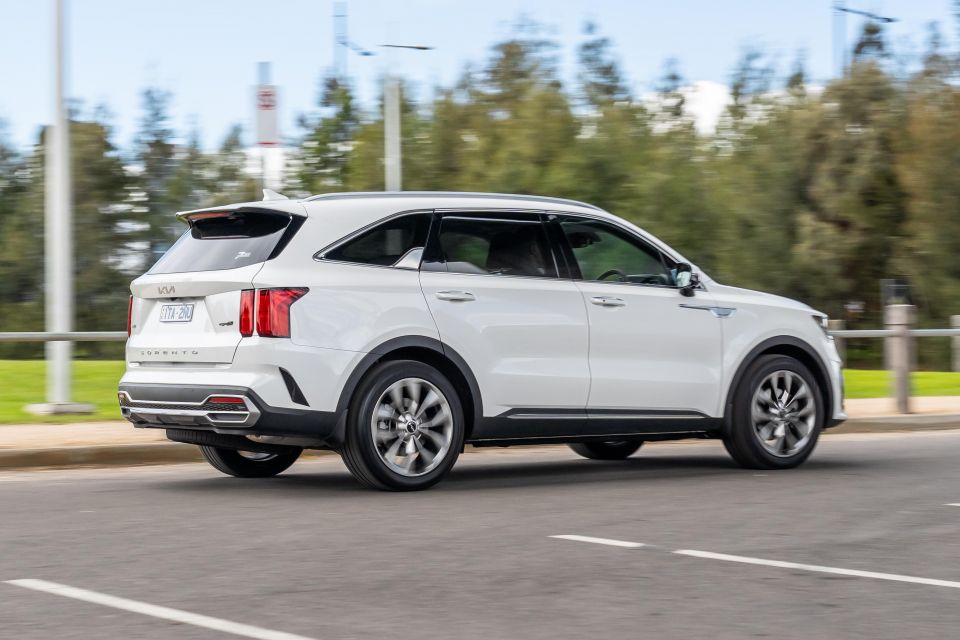
Despite its 4810mm long and 1900mm wide footprint, the Sorento isn’t tricky to pilot on tight city streets. If you are struggling, the cameras are all high-resolution, and the parking sensors are backed by a handy visualiser on the touchscreen.
The steering is light at low speeds, and the squared off bonnet makes the car easy to place. The tall windows make for solid all-round visibility, and the blind-spot view camera is handy.
Up the speeds and the Sorento is a planted, refined cruiser. Its suite of driver assists is hands-on – arguably too hands-on at times – but there’s no question they’ll keep you a set distance behind the car in front, stop you from drifting over a white line, and warn you if you’re getting tired.
If there’s a knock on the car’s credentials as a way to cover lots of ground it’s the ride, which in the GT-Line is sharper than in other Sorento variants. It’s still comfortable, but sharper-edged bumps make their presence known in the cabin more than in the entry-level model with its smaller wheels.
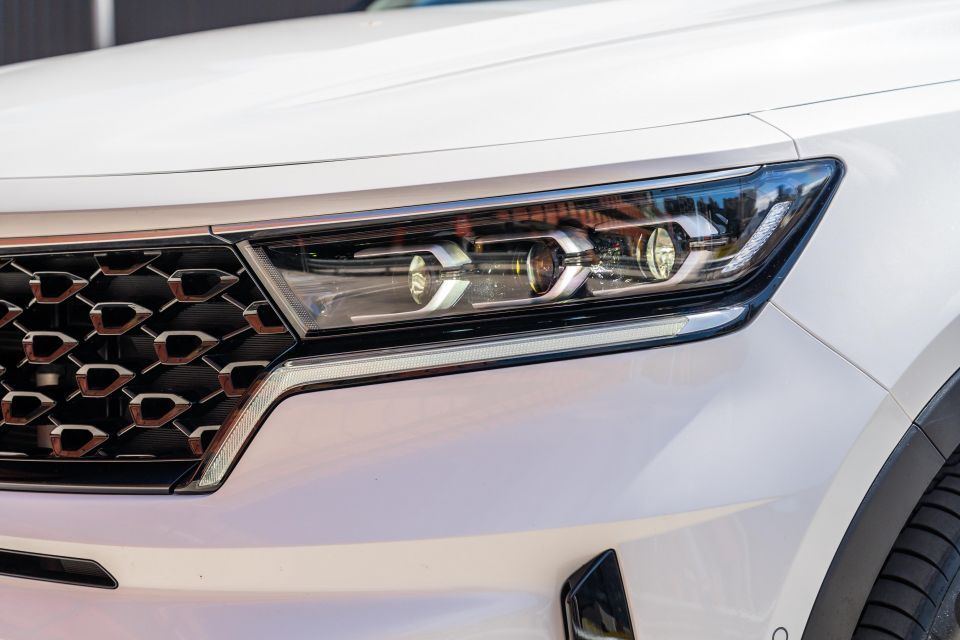



Sorento S highlights:
Sorento Sport adds:

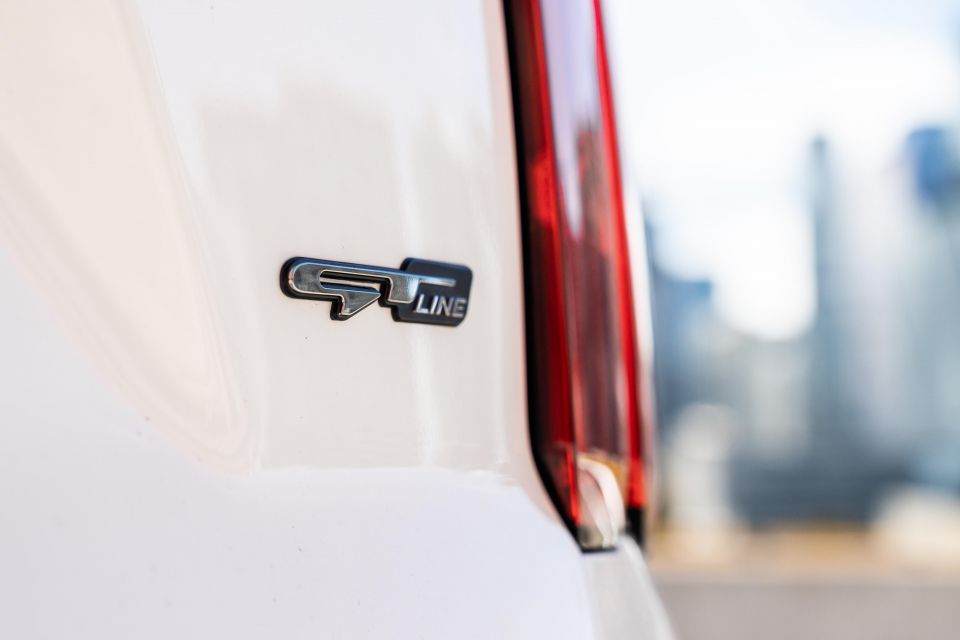
Find out more about the car
Sorento Sport+ adds:
Sorento GT-Line adds:
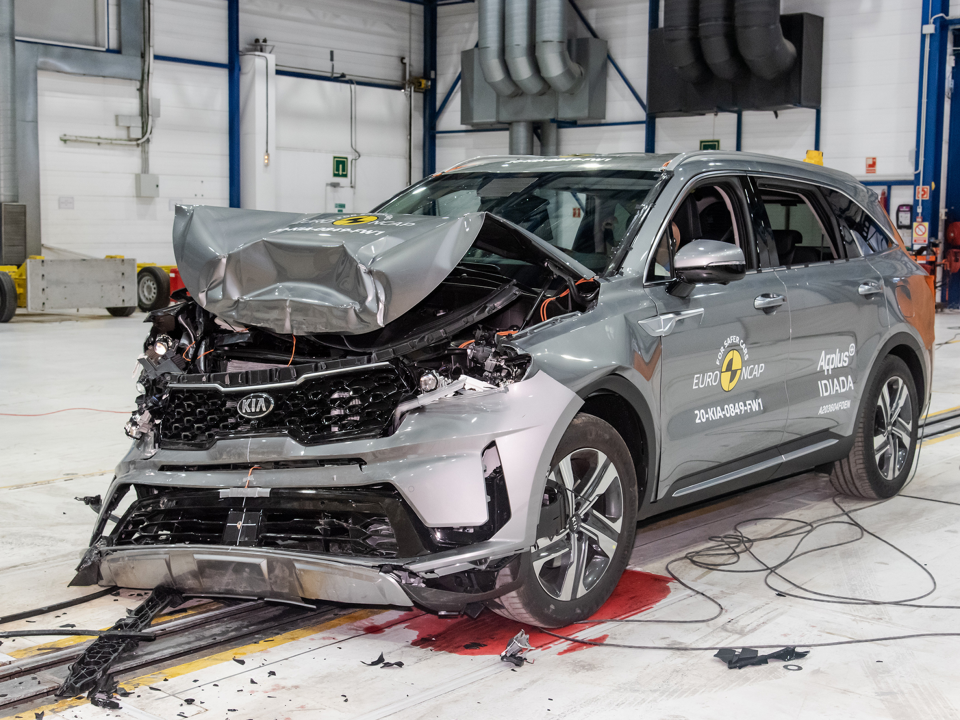
The Kia Sorento wears a five-star ANCAP safety rating based on tests conducted by Euro NCAP in 2020. All variants are covered by this rating, including petrol, diesel, hybrid and plug-in hybrid versions.
Category scores include 82 per cent for adult occupant protection, 85 per cent for child occupant protection, 63 per cent for vulnerable road users protection and 89 per cent for safety assist.
Standard safety equipment includes:
The GT-Line brings dual-LED projector-type headlights, a 360-degree camera system, Blind Spot View Monitor cameras, and Parking Collision Avoidance Assist that can apply the brakes if the vehicle detects obstacles at low speeds like pedestrians or a wall.
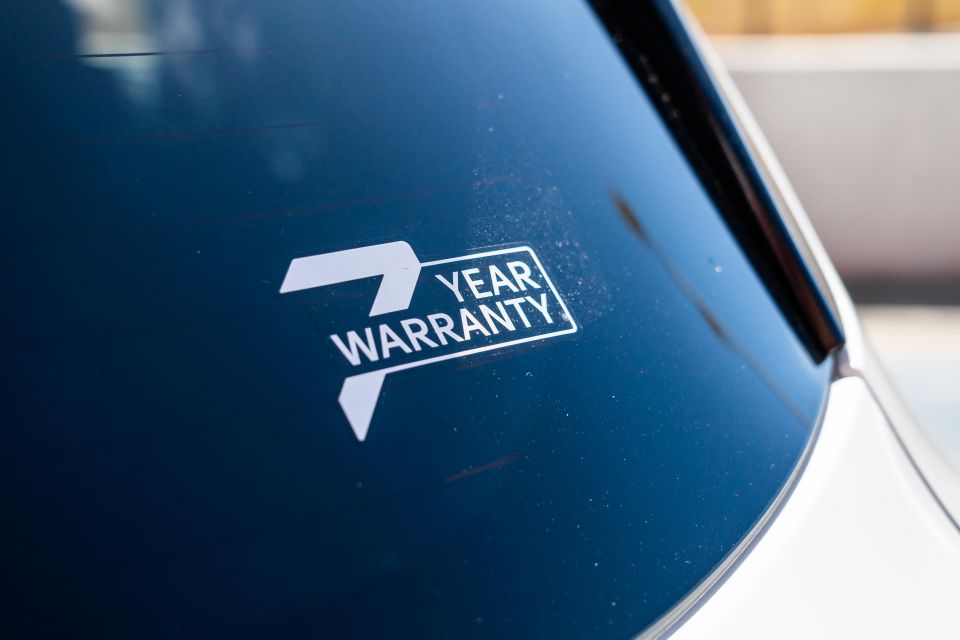
Kia offers a seven-year, unlimited-kilometre warranty across its range. Owners who service their cars within the dealer network also get eight years of free roadside assist.
Maintenance is required every 12 months or 15,000 kilometres, whichever comes first.
The first seven years of servicing will set you back a combined $3463.
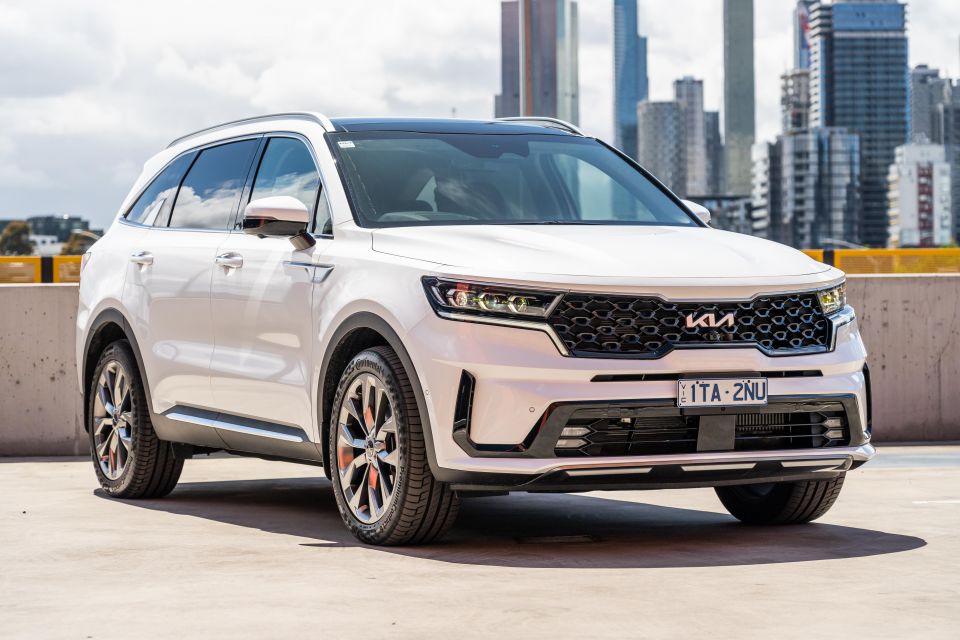
The Sorento blends its competence with an extra dash of luxury in GT-Line guise.
It’s a worthy flagship for the brand, and a strong alternative to the Hyundai Santa Fe, Mazda CX-9, and upcoming Nissan Pathfinder.
The diesel engine is comfortably the more convincing of the non-hybrid powertrains, although it’s not perfect. It’s time for Kia to bring the most efficient Euro 6 version of the diesel engine Down Under, complete with automatic start/stop, and a hint of polishing for the dual-clutch transmission wouldn’t go astray at the mid-life refresh.
Do you need the GT-Line? Most of the extra equipment that comes with the step from Sport+ to GT-Line isn’t exactly critical, but it’s all nice to have – and even at the top end of the range, undercuts its rivals on price.

Click the images for the full gallery
MORE: Everything Kia Sorento
Take advantage of Australia's BIGGEST new car website to find a great deal on a Kia Sorento.
Discover and compare similar models
Scott Collie is an automotive journalist based in Melbourne, Australia. Scott studied journalism at RMIT University and, after a lifelong obsession with everything automotive, started covering the car industry shortly afterwards. He has a passion for travel, and is an avid Melbourne Demons supporter.


William Stopford
4 Days Ago


James Wong
3 Days Ago
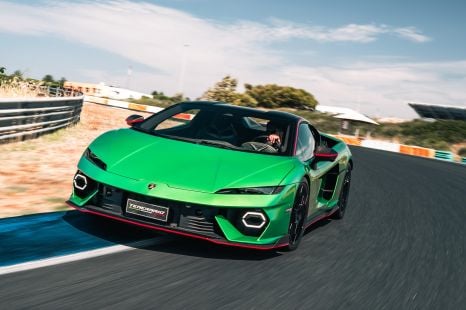

Alborz Fallah
2 Days Ago


Andrew Maclean
2 Days Ago
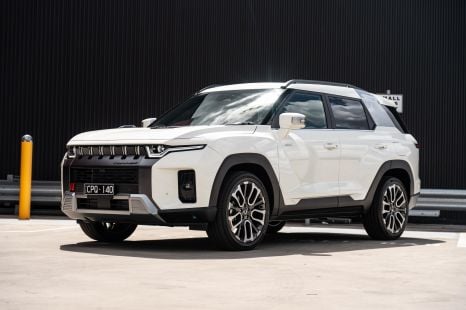

Max Davies
2 Days Ago
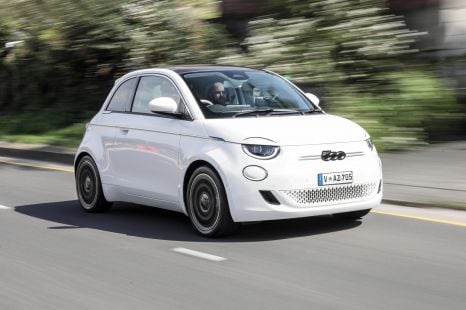

Damion Smy
1 Day Ago